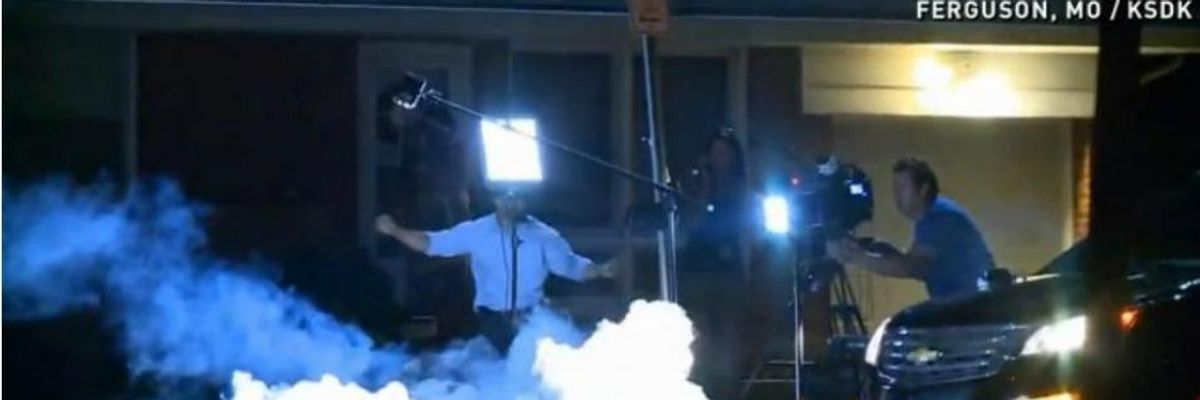The killing of Michael Brown, an African-American man, by a white police officer in Ferguson, Missouri, posed a test for corporate media. The story was hard to avoid once the local community came out in protest, still ongoing, and were met harshly by police. Probably more significant for the press corps, the online community-in this case largely black social media-erupted in pain and anger, with some of their criticism directed at the press itself.
Some media have hewed to troubling practices that privilege police accounts and play up the specter of unruly mobs, as with the USA Today story (8/14/14) that rhetorically balanced "angry calls for reform and tear gas lobbed at protesters," in a piece that glossed the use of dogs, submachine guns and riot gear as police "seek[ing] order." And some will always choose to bland it out, like the L.A. Times' reference (8/13/14) to "an unsettled national conversation over race and policing."
The surprise, then, has been the extent to which some media seem to be taking the outcry seriously, talking about the militarization of police-brought home by the rough treatment given to reporters covering the story-and the criminalization of black people.
But there's still a question of how deep they'll delve. Media were especially taken with the hashtag campaign #iftheygunnedmedown, in which black men posted two different pictures of themselves-one in cap and gown, for instance, and another in which they looked "tougher" or "rougher"-and rhetorically asked which image media would use if they were killed by police. The campaign garnered a front-page story in the New York Times (8/12/14) and a Time magazine plaudit (8/11/14) for "What Hashtag Activism Does Right."
Sadly, the point wasn't that it was an interesting question, but that we already know the answer.
